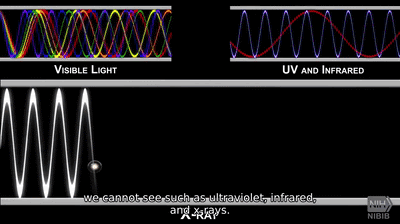X-Rays - Properties, Definition, Wavelength, Types, Uses, FAQs
X-rays are a kind of radio waves (electromagnetic radiation), similar to visible light. Unlike light, still, x-rays have higher energy and can move or pass through most bodies, as well as the object. Medical x-rays are used to produce images of tissues and structures inside the object or body. In this article, we will discuss, who is invented or discover X-ray? What is X-ray? What is X-ray wavelength? What is the meaning of X-ray? How are X-ray produced? What is frequency of X-ray? What are uses, application and properties/characteristics of X-ray? What are the types of X-rays? So let’s see,
JEE Main/NEET 2027: Physics Important Formulas for Class 10
NEET 2025: Mock Test Series | Syllabus | High Scoring Topics | PYQs
JEE Main: Study Materials | High Scoring Topics | Preparation Guide
JEE Main: Syllabus | Sample Papers | Mock Tests | PYQs
- What are X-rays?/ what is x ray?
- Properties of X-Rays/ properties of x rays
- What are the Characteristics of X Rays?
- x rays uses /Applications of X Rays


What are X-rays?/ what is x ray?
Definition: X-Ray is also known as the “Roentgen radiation”. It is a radio wave (electromagnetic radiation) with an energy which ranges from 124 eV to 124 keV. where this energy can be put in the form of J (Joules). Still, a wave with this more energy can easily transfer from non-opaque (transparent) to non-transparent (opaque) objects. The meaning of X-ray in hindi “क्ष-किरण” “ऍक्स-किरण”.
Who invented or discovered X-ray?
On 8 November, 1895, X-rays were discovered by a German Physicist called “Wilhelm Conrad Röentgen”. X-rays were discovered fortuitously by German scientist Roentgen in 1895. In 1901, Roentgen was awarded for his great add this regard. German physicist Wilhelm Röntgen is usually credited for the invention of X-Rays in 1895 because he was the primary to extensively examine them, though he's not thought to be the primary to possess seen and perceived their effects. They were found emanating from Crookes tubes, experimental discharge tubes invented around 1875, by scientists looking into the cathode rays, which are energetic electron beams that were first formed within the tubes. X-rays are highly penetrating electromagnetic wave and have proved to be a really powerful tool to review the crystal structure, in material research, within the radiography of metals and within the field of medical sciences.
Also read -
- NCERT Solutions for Class 11 Physics
- NCERT Solutions for Class 12 Physics
- NCERT Solutions for All Subjects
What is the wavelength of X-ray?/ What is x ray wavelength?
X-ray is an electromagnetic wave with very small wavelength, and really greater energy. X rays have a frequency starting from 30 petahertz to 30 exahertz.
The wavelength of X-rays is smaller than the Ultraviolet rays, and greater than Gamma rays.
So, what's the wavelength of x rays?
X Rays have a wavelength ranging from 0.01 to 10nm.
How X-rays are produced?/ how are x rays produced?/ x ray production

Roentgen discovered that when X-rays are skilled arms and hands or the other part.
Experimentally, x rays are produced from a high energetic electron beam. When the beam is incident on a target, x-rays are formed. The target should have high melting point and high atomic mass.
How do X-rays work?
They are generated when high-velocity electrons hook the metal plates, consequently giving the energy because the X-Rays and themselves are absorbed by the metal plate.
The X-Ray beam travels via the air and comes in touch with the body tissues, and generates a picture on a metal film.

Soft tissue such as organs and skin cannot soak up (absorb) the high-energy rays, and consequently the beam passes via them.
Dense materials inside our bodies, like bones, soak up the radiation.
Properties of X-Rays/ properties of x rays
X-rays with short wavelengths with high penetrating ability are highly destructive, that’s why they're called hard x-rays.
The uses of X rays for medicinal reasons have less penetrating power and have longer wavelengths and are called soft x-rays. X-ray waves have a dual nature. We’ll now discuss the subsequent properties of those radiations:
- They can cross the materials with more or unchanged.
- They are not easily refracted.
- These rays don't suffer from the electromagnetic field.
- X-rays ionize the encompassing air by discharging electrified bodies.
- They have very short wavelengths starting from 0.1 A° to 1 A°. The speed of X rays are almost like that of light, i.e., 186,000 miles/second or 300,000 kilometers/sec.
Related Topics Link, |
What are the Characteristics of X Rays?
Following are the characteristics of X-rays:
- The calculation for an X-ray is:
eV = hfm
Where,
e = electron charge;
V = accelerating potential
fm = maximum frequency of X radiation
2. The Characteristic Spectrum because of transition of electron from greater to shorter state:
= a (z-b)2 (Moseley's Law)
Where
? = wavenumber
b = shielding factor, whose values changes appropriately:
b = 1 or ka and 7.4 for La
3. Bragg’s Law is
2d Sinθ = nλ
θ= angle for a max. Intensity
What are the types of X-rays?
Types of X-Rays
Medical science recognizes differing types of X-Rays. a couple of important sorts of X-Rays are given within the points below.
- Standard computerized tomography
- Kidney, Ureter, and Bladder X-ray
- Teeth and bones X-rays
- Chest X-rays
- Lungs X-rays
- Abdomen X-rays
Also Read:
- NCERT solutions for Class 12 Physics Chapter 8 Electromagnetic Waves
- NCERT Exemplar Class 12 Physics Solutions Chapter 8 Electromagnetic Waves
- NCERT notes Class 12 Physics Chapter 8 Electromagnetic Waves
x rays uses /Applications of X Rays
- X-rays are wont to analyze alloys through the diffraction pattern.
- X-rays enable doctors to simply detect things like a bone fracture or sprain within the body.
- X-rays are wont to identify manufacturing defects in tyres.
- Doctors use X-rays to see flaws in welding joints and insulating materials.
- Doctors use X-ray to find out the human skeleton defects.
5 Uses of X Rays in Physics
- Restoration
- Medical Science
- Security
- Astronomy
- Industry
Also check-
- NCERT Exemplar Class 11th Physics Solutions
- NCERT Exemplar Class 12th Physics Solutions
- NCERT Exemplar Solutions for All Subjects
NCERT Physics Notes:
Frequently Asked Questions (FAQs)
Röntgen shows the radiation as "X", to represent that it was an unknown type of radiation.
Radiologic Physics is the study of medical imaging components, technology, and parameters in an attempt to supply optimal imaging results. The aim of studying radiologic physics is to confirm that you get clear images while ensuring the patient is safe from radiation.
50 m is the minimum interval at which X-radiation is being taken.
X-rays are released from processes outside the nucleus, but gamma rays formed inside the nucleus. X rays are produced using x-ray tubes or tube x while gamma rays are produced in radioactive decay.
x ray discovered by or x rays were discovered by W.C. Rontgen.
X radiation.
Also Read
13 Nov'24 11:10 AM
13 Nov'24 11:04 AM
12 Nov'24 11:55 PM
12 Nov'24 11:15 PM
12 Nov'24 10:04 PM
26 Sep'24 10:28 AM
26 Sep'24 10:26 AM
26 Sep'24 10:23 AM
